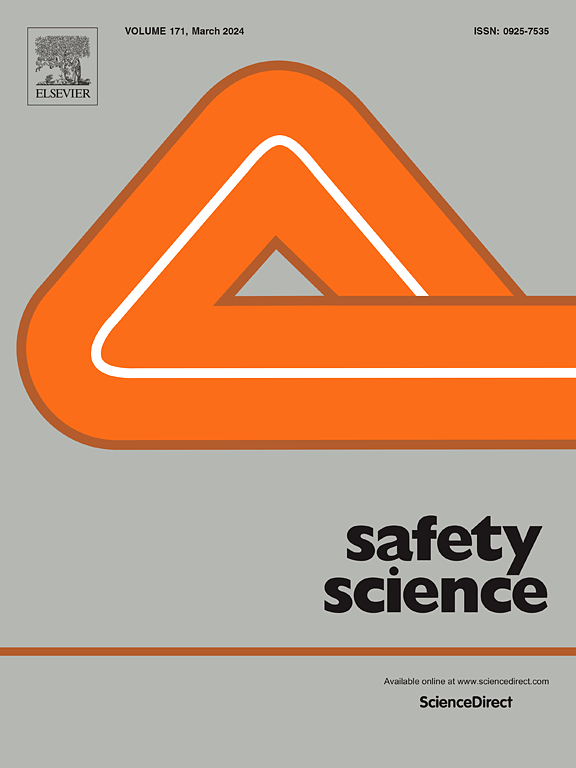开发虚拟现实行人过街任务:对危险感知和间隙接受度的研究
IF 4.7
1区 工程技术
Q1 ENGINEERING, INDUSTRIAL
引用次数: 0
摘要
行人是特别容易受到伤害的道路使用者,因为他们在发生车祸时缺乏保护,这使得安全过马路成为当务之急。目前对行人危险感知行为的研究还很有限,因为还没有使用既定程序来开发过街任务。当前的研究旨在将既定的驾驶员危险感知原则应用于虚拟现实行人过街任务(VR-PSCT)的开发,该任务可分别评估危险感知和间隙接受度。研究人员在悉尼和墨尔本郊区的 24 个地点使用 360 度摄像机,以儿童和成人的平均身高拍摄了未上演的过街场景(包括 36 个危险感知片段和 41 个间隙接受片段)。采用既定的测试创建程序,对 16 个危险感知片段和 17 个间隙接受片段进行了测试,共有 76 人参加:32 名儿童(中位数 = 9.48,标准差 = 1.31,75.2% 为男性)和 44 名成人(中位数 = 23.45,标准差 = 3.46,48% 为男性)。通过对表现进行分析,删除了另外 9 个片段,最终 VR-PSCT 由 13 个危险感知片段和 11 个间隙接受片段组成。与儿童相比,成人更经常在指定的危险和间隙窗口内做出反应,反应时间明显更快,更经常准确识别危险。这表明,成人和儿童之间的比较是确定行人任务中是否包含片段的有用衡量标准,并为 VR-PSCT 提供了支持,使其成为评估行人过马路两种关键行为的适当方法,可用于未来的行人道路安全研究中。本文章由计算机程序翻译,如有差异,请以英文原文为准。
Development of a virtual reality pedestrian street-crossing task: The examination of hazard perception and gap acceptance
Pedestrians are a particularly vulnerable road user due to their lack of protection in the event of a crash, which makes safe road-crossing imperative. Current research on pedestrian hazard perception behaviour is limited because street-crossing tasks have not been developed using established procedures. The current study aimed to apply established driver hazard perception principles to the development of a virtual-reality pedestrian street-crossing task (VR-PSCT) which assessed hazard perception and gap acceptance separately. Un-staged street-crossing scenarios (including 36 hazard perception and 41 gap acceptance clips) were filmed at average child and adult heights using 360-degree video cameras at 24 locations across Sydney and Melbourne suburbs. Using established test creation procedures, 16 hazard perception and 17 gap acceptance clips were tested with 76 participants: 32 children (M = 9.48, SD = 1.31, 75.2 % male) and 44 adults (M = 23.45, SD = 3.46, 48 % male). Analysis of performance resulted in the removal of another nine clips, resulting in a final VR-PSCT comprising 13 hazard perception and 11 gap acceptance clips. Adults responded more often within the designated hazard and gap windows, had significantly faster response times, and accurately identified hazards more often than children. This indicates that a comparison between adults and children is a useful metric for determining clip inclusion in pedestrian tasks and provides support for the VR-PSCT being an appropriate assessment of two key pedestrian street-crossing behaviours that can be used in future research on pedestrian road safety.
求助全文
通过发布文献求助,成功后即可免费获取论文全文。
去求助
来源期刊

Safety Science
管理科学-工程:工业
CiteScore
13.00
自引率
9.80%
发文量
335
审稿时长
53 days
期刊介绍:
Safety Science is multidisciplinary. Its contributors and its audience range from social scientists to engineers. The journal covers the physics and engineering of safety; its social, policy and organizational aspects; the assessment, management and communication of risks; the effectiveness of control and management techniques for safety; standardization, legislation, inspection, insurance, costing aspects, human behavior and safety and the like. Papers addressing the interfaces between technology, people and organizations are especially welcome.
 求助内容:
求助内容: 应助结果提醒方式:
应助结果提醒方式:


